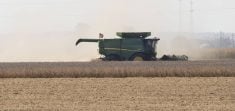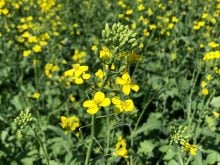Reuters – China’s soybean acreage may only slightly increase this year, an official said April 20, suggesting output is unlikely to match last year’s jump.
The world’s top soybean importer launched a major effort to increase production of the pulse in 2022 amid concerns over its heavy reliance on imports. Output increased almost 24 per cent to 20.3 million tonnes that year.
However, an official from China’s Ministry of Agriculture and Rural Affairs said farmers were less willing to plant more of the crop in 2023.
Read Also

Man shot in hunting incident
Three teens face charges after a 66-year-old man was shot in the arm outside of his home in the RM of Victoria
“Frankly speaking, due to the low soybean market price and low comparative benefit, the enthusiasm and willingness of farmers to plant soybeans has declined compared with this time last year,” Pan Wenbo, director general of the ministry’s Department of Crop Production, told a press briefing.
After offering a package of incentives, including significantly higher subsidies to plant soybeans compared to corn in key growing areas in the northeast, planting intentions had improved, he added. However, any national increase is expected come from other regions where a campaign to promote intercropping with corn is underway.
Compound planting of the two crops is expected to increase slightly. Just over 3.2 million acres are expected to utilize the practice this year, Pan said.
As a result, he expected the country’s soybean acreage to be stable or slightly increase in 2023.
China’s homegrown soybeans are used for food, while imported genetically modified beans are crushed into meal for animals and oil for cooking.
China’s hog farmers are set to make profits by the end of the second quarter as feed prices fall and consumption picks up, another official said at the same briefing.
Hog prices in the world’s top pork producer have slumped this year, weighed down by the largest quarterly slaughter volume in five years, data showed in the third week of April.
But consumption is due to improve during the upcoming Labour Day and dragonboat festival holidays, said agronomist Zeng Yande.
He added that a sow herd of 43.05 million pigs as of the end of March was still within a reasonable range for the country. The number is 0.9 per cent lower than February but higher than the ideal herd size of 41 million.
Zeng also said the disease situation in the country’s hog herd was “generally stable,” and described recent reports of disease outbreaks in the north as “hype.”















